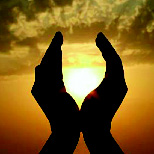Dr. Rajesh Bhola
India
Sep 07, 2012

India
Sep 07, 2012

One of my Chinese friends is working as the country head of a
multi-national company in India. One day I asked him why the Chinese use
the imagery of a dragon every where, and at all the occasions in their
lives.
He started with this. “The dragon commands great respect in Chinese culture. If you want to give the greatest compliment to any Chinese citizen, call him the Dragon Face.”
Dragons are revered as the representatives of the primal forces of
nature, religion and the universe. They are associated with wisdom, are
often said to be wiser than humans, and are known for their longevity.
They are also said to be capable of speech. The dragon is the
highest-ranking animal in the Chinese animal hierarchy, and was strongly
associated at one time with the emperor—and hence with power and
majesty.
Chinese
dragons traditionally symbolise potent and auspicious powers –
particularly control over water, rainfall, hurricane, and floods. The
dragon also has the power to release water to parched lands – and so
brings abundance and relief. Excellent and outstanding people are
compared with the dragon, while incapable people are compared with
dis-esteemed creatures, such as the worm. Ancient Chinese dragons are
the ultimate symbols of cosmic Chi (energy). The dragon is said to be
the most potent symbol of good fortune in the Chinese pantheon of
symbols.
I
also realised that, potentially, we are all riders of great dragons.
The fire animal is within our selves. Western religions have often
sought to kill the dragon within us. The spirit of the Eastern religions
is to ride the dragon. A dragon’s scale becomes a magic aid
bestowed by the dragon, as an appreciation of the hero’s virtue or
courage – and it conveys special protection and power. The
enlightened approach is to befriend the fire animal, and so gain the
benefit of its power – which can then be used for good in the world.
As
long as we are at the mercy of the winds of greed, hate and delusion,
we will continue to create injustice, oppression, cruelty and ill will –
however much we may believe that we are good civilised citizens. By
becoming masters of our fire, however, we become awakened beings,
capable of working for the real good of the world. Such persons have
spiritual fire, and have it well-sheltered, so that it is at their
command. I have been fortunate to have met people like this, people who
have pursued the righteous path, and become great dragons. υ
Dr. Rajesh Bhola
is President of Spastic Society of Gurgaon and is working for the cause
of children with autism, cerebral palsy, mental retardation and
multiple disabilities for more than 20 years.
The Chinese dragon has a horse’s head and a snake’s tail. Further, the dragon is also known for its nine resemblances:
σ Its horns resemble those of a stag
σ The head that of a camel
σ The eyes those of a demon
σ The eyes those of a demon
σ The neck that of a snake
σ The belly that of a clam
σ The scales those of a carp
σ The claws those of an eagle
σ The soles those of a tiger
σ The ears those of a cow.
No comments:
Post a Comment